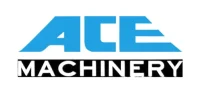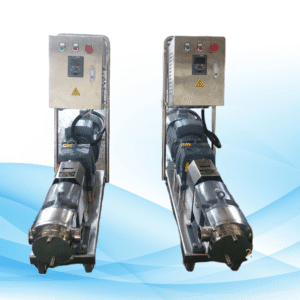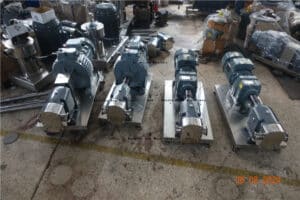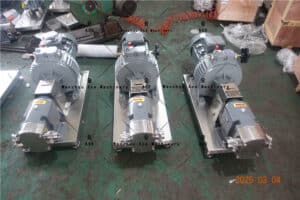Introduction to Colloid Mills and High Shear Mixers
Selecting the right equipment is vital while carrying out activities like mixing, emulsifying, or dispersing in different branches of industry such as pharmaceuticals, food, and chemicals. A colloid mill and a high shear mixer are two typical machines used for these purposes. Both devices have the capability of reducing particle size and forming a uniform mixture, however, they employ different methods and each has its advantages and disadvantages.
This article will look into the major features that set colloid mills apart from high shear mixers to enable the reader to make a sound selection between the two regarding their application.
How Colloid Mills Work

Colloid mills work mainly by the principle of size reduction using shear and grinding actions, which are two-dimensional forces that occur within a rotor and a stator. The fast moving rotor rotates on a fixed stator whereas when materials pass between the two, the materials get torn apart into smaller fragments. Achieving this enables emulsification, dispersion and fine grinding processes which also means colloid mills are the most effective at producing homogeneous mixtures that have a consistent range of particle sizes.
Design and Construction of Colloid Mills
Colloid mill is made up of 2 structural parts, rotor, which can move around in a rapid motion, and a stationary part known as the stator. One of the major functions of the rotor unit is to control the slits which are adjustable, that are set between the rotor and the stator. Kołodziejski frames a gap of colloid mills which is adjustable according to the various designs of these type of apparatus. Modifications of colloidal mills include orientations that are vertical or horizontal.
Applications of Colloid Mills
Colloid mills are most suitable where two or more liquids are required to be mixed solely by dispersing liquid mixtures, or finely tolled pigments into liquid mediums, and films of pigmented gouache, oil, or water paints are composed of these emulsions. They are applied on:
- Food industries: As the name suggests, coarse mayonnaise and similar products can be obtained from naked colloid mills.
- Medical Practice: Lullabies and ointments are produced using colloidal mills.
- Itching Cream: Another oil, known for its melting point, aids the combining ingredients’ homogeneity with oil and silicone compositions.
How High Shear Mixers Work
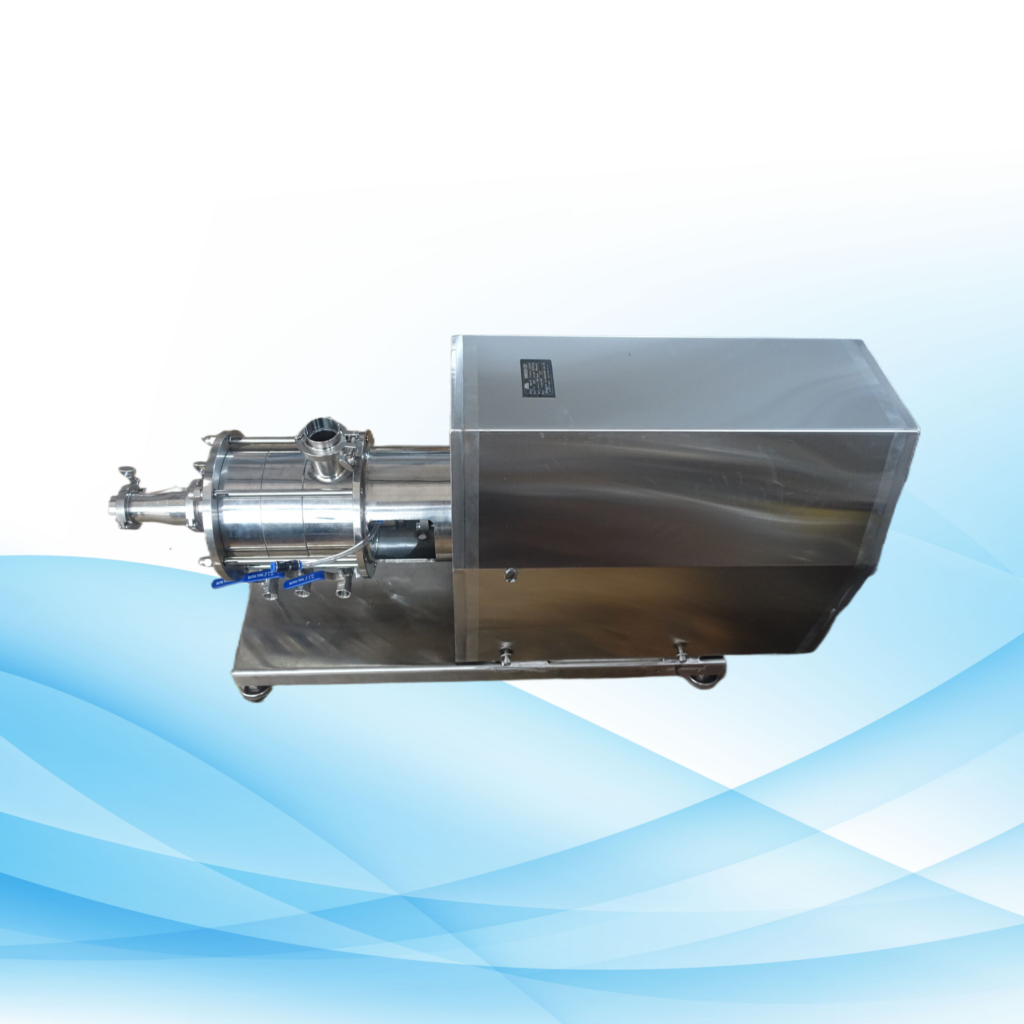
Unlike what is known, high shear mixers use particularly fast shells, mixed with an impeller to transmit tension into the product. Due to the rotation of high speed impellers, the rotation motion allows the products to be splashed, thus creating turbulence which in turn develops shear forces capable of grinding residues and turn it into an emulsifier. These systems have the ability to produce stable emulsion and dispersion of the product from the paint-base very effectively even during mass production.
Design and Construction of High Shear Mixers
In the case of mixers employing high shear force, a specific type of rotor – a stator system or an impeller generator – is available to create a vortex which pull substances into the mixing area. Different types of high shear mixers exist including batch static mixers that perform smaller run production processes and inline static mixers that operate in continuous processes.
Applications of High Shear Mixers
Industries utilize high shear mixers for a variety of applications such as the following:
- Food industry: These mixers find applications in the production of mayonnaise, yoghurts, dressings and a host of other products.
- Pharmaceuticals: These products assist in the formulation and development of lotions, creams and gels.
- Chemicals: They include shampoo, detergents, polymers, cosmetics, and more in order to maximize their production.
Performance Comparison: Colloid Mill vs High Shear Mixer
In order to assess colloid mills and high shear mixers, there are key comparison indices that the performance can be assessed, including particle size distribution, energy consumption, as well as the potential for mass production.
Particle size control
Complexity of control of particle size is a limitation only in colloid mills since the rotor-stator gap is adjustable. With these devices very fine dispersions can be obtained easily. They suffer however in efficiency, although apparently not the extent that makes mixing ineffective. Cutting Edge Technology: High shear requires minimum shear time and consequently the shear levels directed to the mixture. It is expected that separating mixed emulsion be more efficient in this case.
Shear force
The opposite is also true, finally Characteristic Unsurprisingly, high shear mixers achieve higher levels of shear forces which in turn translates to relatively higher operational effectiveness when dealing with large batch emulsification.
Energy efficiency
When it comes to exercises in cutting gum-like materials inordinate thickness, it has been noted that colloid mills are more energy efficient than their counterparts. When greater volumes are involved, high-shear mixers are the right tools due to their effectiveness at these levels.
Maintenance and Cleaning: Colloid Mill vs High Shear Mixer
Like all machines, those mentioned above are required to undergo periodic maintenance checks and fixes if necessary. The level of cleaning, however, is likely to be experienced at varying dimensions.
Colloid mills may need more maintenance than others due to the presence of abrasive components, especially when the majority of work done is with mechanically pressing apparatus.
High shear mixers need less cleanup thanks to the construction of in-line configurations, which can be incorporated into CIP systems and are suited to address pressures from markets with strict hygienic barriers.
Advantages of Colloid Mills
- They are fast and efficient in size reduction: colloid mills are effective in reducing particle sizes gelatinous products due to their viscous nature.
- Improvement of the consistent outcome: They yield consistently similar outcomes hence are best suited in tasks calling for specific controlled sizes for particles.
Advantages of High Shear Mixers
- Multiple applications: High shear mixers can process products over the entire viscosity range that spans from low to high.
- Efficient operations on a large-scale: High shear mixers are more appropriate for mass production, because they have a higher capacity than colloid mills.
Limitations of Colloid Mills
- Mechanical wear and tear: The rotor and stator also suffer huge wear and are liable to parts replacement more often due to mechanical action.
- Limitations include: Colloid mills may not thrive well with products that have a very high solid content or extreme viscosities.
Limitations of High Shear Mixers
- Energy consumption: High shear mixers, especially in large-scale industry or production, are most likely to exceed energy consumption of other shearing devices.
- Inconsistent results with certain formulations: High shear mixers can work quite well but some high viscosity products may not achieve the same consistency with them.
Choosing the Right Equipment: Factors to Consider
In case of a choice between a colloid mill and a high shear mixer, one should consider aspects such as:
- Formulation needs: To achieve ultra-fine reduction of particles a colloid mill might be more preferred. However, for high volumes of mixture within limited time hsm is superior.
- Volume: High shear mixers should be used where productions scales are larger, owing to their higher output.
- Cost: In terms of affordability, colloid mills would be more cost effective with hsm having higher management costs.
Colloid Mill vs High Shear Mixer: Which is the Best?
Colloid mills and high shear mixers are both great devices but selection for one depends on the application. For instance, Colloid mills are best suited for crushing thick and high-solid-content materials and require some level of precision in the measurements. Mixing on the other hand is much easier with high shear mixers since it cuts through varying viscosities and is comparatively faster during larger run productions.
Conclusion: Colloid Mill or High Shear Mixer – the Final Debate
In closing, both colloid mills and high shear mixers are widely used within the scope of industrial processes. Colloid mills can effectively be used in companies where finer particle sizes are required while high shear mixers provide a solution more suitable in heavy duty emulsifications in mixing processes. Finally, inherent characteristics of the product such as type, volume and cost should be the ones guiding you in selecting your method.
Practice Report Questions (PRA)
- What separates colloid mills and high shear mixers? In the reduction of particles, colloid mills employ the rotor-stator systems while high shear mixers employ an impeller that primes rapid mixing. From this distinction, it can be inferred that colloid mills have a more precise control of the size of the particles while high shear mixers have more speeds suitable for mixing large volumes of batches.
- Which equipment is better for reduction of particle size? Colloid mills are able to provide more accurate particle size control as they are best suited for achieving ultra-fine dispersions.
- Can colloid mills be used in place of high shear mixers? Not in all instances. However, both machines can achieve similar actions but the specific requirements of the product and the process always govern the choice.
- What kind of maintenance do these machines need? Colloid mills must be maintained periodically since they are subject to rotor and stator wear and tear, while high shear mixers are much easier to clean particularly when deployed with the use of CIP systems.
- Which is more energy efficient: colloid mills or high shear mixers? In general, for most materials with high viscosity, use of colloid mills will most probably be energy efficient whereas high shear mixers may require more energy but can deliver greater output.
- Which industries will find the use of each equipment more practical? Colloid mills are used in the food, pharmaceutical and chemical sectors where fine dispersions are most required. High shear mixers are used in the same industries but during large scale production it can be more useful.
